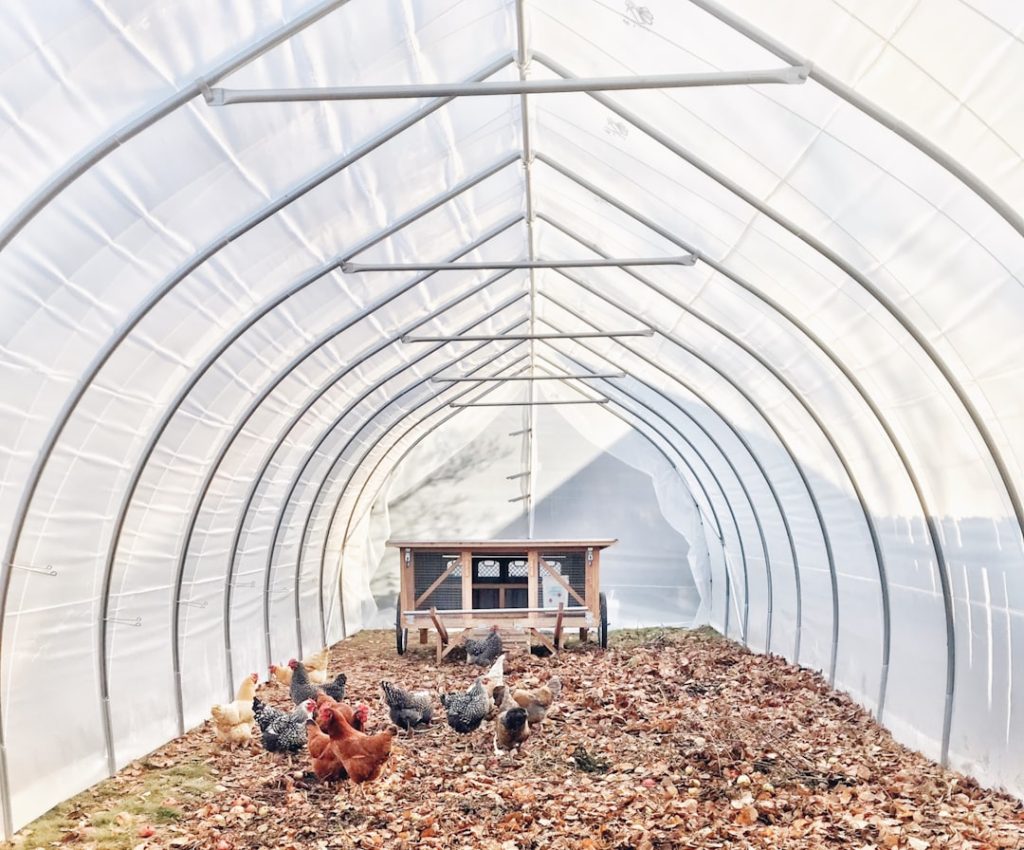Chickens have a natural instinct to perch and sleep off the ground, a behavior known as roosting. While this instinct is essential for their well-being, it can become problematic when chickens roost in undesirable areas such as fences, trees, or outdoor furniture. This behavior can lead to several issues:
1.
Safety risks: Chickens roosting in open areas are more vulnerable to predators. 2. Sanitation concerns: Accumulation of droppings in inappropriate areas can create health hazards and unpleasant odors.
3. Property damage: Roosting on structures or trees may cause damage and potential injury to the chickens if they fall. 4.
Neighbor conflicts: Noise and mess from chickens roosting in unsuitable locations can lead to strained relationships with neighbors. 5. Legal issues: In urban and suburban areas, local ordinances or homeowner association rules may prohibit chickens from roosting in certain areas, potentially resulting in fines or other consequences.
It is crucial for chicken owners to understand the importance of preventing their birds from roosting in unwanted areas. By taking proactive measures to address this behavior, owners can ensure the well-being of their chickens, maintain positive relationships with neighbors, and comply with local regulations. Proper management of roosting habits is essential for responsible chicken ownership in both rural and urban environments.
Table of Contents
- 1 Creating a Comfortable and Safe Roosting Area for Chickens
- 2 Implementing Physical Barriers to Prevent Roosting in Undesirable Areas
- 3 Utilizing Lighting and Sound to Discourage Roosting in Unwanted Locations
- 4 Providing Adequate Exercise and Stimulation to Deter Roosting Behavior
- 5 Addressing Health and Behavioral Issues Related to Roosting
- 6 Seeking Professional Assistance for Persistent Roosting Problems
- 7 FAQs
- 7.1 What are some methods to keep chickens from roosting in unwanted areas?
- 7.2 Why is it important to keep chickens from roosting in certain areas?
- 7.3 Are there any natural deterrents that can be used to keep chickens from roosting in unwanted areas?
- 7.4 What are some potential health risks associated with chickens roosting in unwanted areas?
- 7.5 How can I train my chickens to roost in a specific area?
Key Takeaways
- Keeping chickens from roosting in undesirable areas is important for their safety and well-being.
- Creating a comfortable and safe roosting area for chickens can help prevent them from seeking out other, less suitable locations.
- Implementing physical barriers, such as netting or wire, can effectively deter chickens from roosting in unwanted areas.
- Utilizing lighting and sound, such as motion-activated lights or noise deterrents, can discourage chickens from roosting in undesirable locations.
- Providing adequate exercise and stimulation for chickens can help deter roosting behavior and promote overall health and well-being.
Creating a Comfortable and Safe Roosting Area for Chickens
Designing the Perfect Roosting Area
One of the most effective ways to prevent chickens from roosting in undesirable locations is to provide them with a comfortable and safe roosting area within their coop. A well-designed roosting area will encourage chickens to roost in the designated space and discourage them from seeking out alternative locations. When creating a roosting area, it is important to consider the needs and preferences of the chickens.
Key Features of a Well-Designed Roosting Area
The roosts should be elevated off the ground, as chickens prefer to perch at higher levels for safety and comfort. Additionally, the roosts should be wide enough for the chickens to comfortably perch without their toes overlapping, which can lead to discomfort and injury. Providing a variety of roosting options, such as different heights and materials, can also accommodate the preferences of individual chickens and reduce competition for space.
Creating a Clean and Inviting Environment
In addition to considering the physical design of the roosting area, it is important to create a clean and inviting environment for the chickens. Regular cleaning and maintenance of the roosting area will help prevent the buildup of droppings and odors that can deter chickens from using the space. Providing adequate ventilation and insulation in the coop will also contribute to a comfortable and healthy roosting environment for the chickens.
Benefits of a Well-Designed Roosting Area
By creating a comfortable and safe roosting area within the coop, chicken owners can encourage their chickens to roost in the designated space and reduce the likelihood of them seeking out alternative locations.
Implementing Physical Barriers to Prevent Roosting in Undesirable Areas

In addition to providing a suitable roosting area within the coop, chicken owners can implement physical barriers to prevent chickens from roosting in undesirable locations. This can be particularly useful for outdoor areas where chickens may be inclined to roost on fences, trees, or other structures. By installing barriers such as netting, wire mesh, or angled boards, chicken owners can effectively block off access to these areas and discourage roosting behavior.
It is important to ensure that any physical barriers are securely installed and do not pose a safety risk to the chickens or other animals in the area. Another effective method for implementing physical barriers is to modify the design of outdoor structures to make them less appealing for roosting. For example, adding sloped or curved surfaces to fences or structures can make it more difficult for chickens to perch and roost.
Additionally, covering flat surfaces with materials that are uncomfortable for chickens to stand on, such as rough textures or spikes, can deter them from roosting in these areas. By implementing physical barriers to prevent roosting in undesirable locations, chicken owners can effectively redirect their chickens to use the designated roosting area within the coop and minimize disturbances in outdoor spaces.
Utilizing Lighting and Sound to Discourage Roosting in Unwanted Locations
In some cases, chicken owners may find it necessary to utilize lighting and sound as deterrents to discourage roosting in unwanted locations. By strategically placing lights or sound-emitting devices in areas where chickens are prone to roost, chicken owners can create an environment that is less appealing for roosting behavior. For example, motion-activated lights or sound alarms can startle chickens when they attempt to roost in undesirable locations, prompting them to seek out alternative spaces.
It is important to use these methods judiciously and consider the well-being of the chickens, ensuring that any lighting or sound devices do not cause undue stress or discomfort. Another approach is to use natural lighting patterns to influence the roosting behavior of chickens. By adjusting the timing and duration of artificial lighting within the coop, chicken owners can mimic natural daylight cycles and encourage chickens to roost at appropriate times.
This can help regulate their behavior and reduce the likelihood of them seeking out alternative roosting locations outside of the coop. By utilizing lighting and sound as deterrents, chicken owners can effectively discourage roosting behavior in unwanted locations and encourage their chickens to use designated roosting areas.
Providing Adequate Exercise and Stimulation to Deter Roosting Behavior
In some cases, chickens may exhibit roosting behavior in unwanted locations due to boredom or lack of stimulation. Providing adequate exercise and mental stimulation can help deter roosting behavior by keeping chickens active and engaged. Encouraging natural behaviors such as foraging, dust bathing, and exploring can provide chickens with opportunities for physical activity and mental enrichment.
Additionally, providing toys, perches, and other environmental enrichment within the coop can help keep chickens entertained and reduce the likelihood of them seeking out alternative roosting locations. Another effective way to provide exercise and stimulation for chickens is to allow them access to outdoor spaces where they can roam and explore. Allowing chickens to free-range in a secure outdoor area can provide them with opportunities for exercise, social interaction, and mental stimulation.
This can help reduce boredom and prevent chickens from seeking out alternative roosting locations as a result of confinement or lack of stimulation. By providing adequate exercise and stimulation for their chickens, owners can help deter roosting behavior in unwanted locations and promote overall well-being.

Health Issues and Discomfort
Chickens may seek alternative roosting locations if they are experiencing discomfort or pain due to health problems such as injuries or illness. Regular health monitoring and prompt veterinary care can help address these issues and alleviate discomfort.
Behavioral Issues and Stress
Behavioral issues such as stress or aggression within a flock can also contribute to roosting behavior in undesirable areas. Observing the flock’s behavior and addressing underlying issues can help reduce stress and conflict.
Creating a Harmonious Flock Environment
Providing adequate space, resources, and social dynamics within the flock can help reduce tension and prevent chickens from seeking out alternative roosting locations due to social stress. By addressing health and behavioral issues related to roosting behavior, chicken owners can promote the well-being of their flock and minimize disturbances in unwanted locations.
Seeking Professional Assistance for Persistent Roosting Problems
In some cases, persistent roosting problems may require professional assistance from experienced poultry professionals or animal behaviorists. If efforts to deter roosting behavior have been unsuccessful or if there are underlying health or behavioral concerns within the flock, seeking professional guidance can be beneficial. Poultry professionals can provide valuable insights into managing roosting behavior and offer practical solutions tailored to the specific needs of the flock.
Additionally, animal behaviorists with expertise in poultry behavior can help identify underlying issues contributing to roosting problems and develop targeted intervention strategies. By seeking professional assistance for persistent roosting problems, chicken owners can gain access to specialized knowledge and resources that can help address complex issues within their flock. In conclusion, keeping chickens from roosting in unwanted locations is essential for their well-being, as well as for maintaining positive relationships with neighbors and complying with local regulations.
By understanding the importance of addressing roosting behavior and implementing proactive measures, chicken owners can create a comfortable and safe environment for their flock while minimizing disturbances in outdoor spaces. Through a combination of physical barriers, lighting and sound deterrents, exercise and stimulation, addressing health and behavioral issues, as well as seeking professional assistance when needed, chicken owners can effectively manage roosting behavior and promote the overall well-being of their flock.
If you’re looking for ways to keep chickens from roosting in unwanted areas, check out this helpful article on chicken coop portage. It provides tips and strategies for creating a comfortable and secure coop environment that encourages chickens to roost in the designated areas.
FAQs
What are some methods to keep chickens from roosting in unwanted areas?
Some methods to keep chickens from roosting in unwanted areas include using physical barriers such as wire mesh or netting, providing alternative roosting spots, and using deterrents such as reflective surfaces or noise.
Why is it important to keep chickens from roosting in certain areas?
It is important to keep chickens from roosting in certain areas to prevent damage to property, reduce the risk of disease transmission, and maintain a clean and safe environment for both the chickens and their owners.
Are there any natural deterrents that can be used to keep chickens from roosting in unwanted areas?
Yes, natural deterrents such as citrus peels, herbs with strong scents, and essential oils can be used to discourage chickens from roosting in unwanted areas.
What are some potential health risks associated with chickens roosting in unwanted areas?
Chickens roosting in unwanted areas can contribute to the spread of diseases such as salmonella and avian influenza. Additionally, their droppings can attract pests and create unsanitary conditions.
How can I train my chickens to roost in a specific area?
To train chickens to roost in a specific area, provide a comfortable and secure roosting spot, encourage them to use it by placing treats or feed nearby, and consistently redirect them to the desired roosting area. Consistency and patience are key in training chickens.
Meet Walter, the feathered-friend fanatic of Florida! Nestled in the sunshine state, Walter struts through life with his feathered companions, clucking his way to happiness. With a coop that’s fancier than a five-star hotel, he’s the Don Juan of the chicken world. When he’s not teaching his hens to do the cha-cha, you’ll find him in a heated debate with his prized rooster, Sir Clucks-a-Lot. Walter’s poultry passion is no yolk; he’s the sunny-side-up guy you never knew you needed in your flock of friends!








